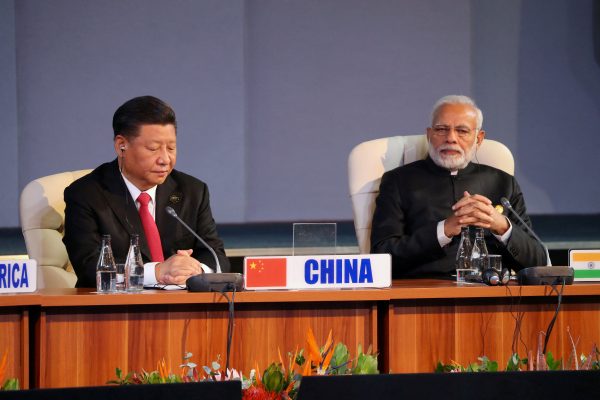As the competition between India and China for influence in South Asia intensifies, foreign investment becomes more important in shaping regional outcomes. This discussion is particularly relevant as China’s Belt and Road Initiative (BRI) continues to expand, reaching the borders of almost every South Asian country. India will need to leverage foreign aid and investments to achieve its goal of becoming a leading player in South Asia.
South Asia remains one of the least integrated regions in the world. Since its announcement in 2013, the BRI has significantly filled this investment vacuum. China has funded the Hambantota port and Port City Colombo in Sri Lanka, the trans-Himalayan corridor and the China–Pakistan Economic Corridor, and sealed an oil extraction deal with Afghanistan and a free trade agreement with Male.
Beijing has also capitalised on the development gap along the Line of Actual Control — the effective border between India and China — by developing villages and a new highway. China’s BRI has created dependency among South Asian countries by attaching conditionality to its aid. This could potentially serve Beijing’s military interests in the future.
This development has spurred India to accelerate its infrastructure projects in the region. Indian policymakers recognise the need to counter BRI projects to safeguard regional stability and prevent further erosion of India’s strategic space.
New Delhi enjoys civilisational and historical linkages rooted in shared culture, norms and tradition. Any developmental vacuum filled by an outside power that disrespects sovereignty will inevitably bite back. The economic crisis in Pakistan and Sri Lanka which embraced the BRI with great gusto is a glaring example. South Asia needs development, but not at the price of pushing the region into dependencies.
To this end, the growing synergy in India–US ties can foster infrastructural growth in the region, especially when Washington is engaging with smaller South Asian states to enhance its Indo-Pacific strategy. During her visit to South Asia, the US Under Secretary of State for Political Affairs announced that the United States would spend more than US$1 billion over the next five years on clean energy, electrification and small women-owned businesses in Nepal.
On the security front, the United States and Bangladesh have passed a draft agreement on the General Security of Military Information Agreement. But this requires Washington to accommodate and work in consonance with India, especially regarding China in South Asia. Managing China’s ambitious rise in India’s immediate neighbourhood where it is seen as bullying and coercing weaker states in the garb of development must be a priority.
India’s ability to provide nearly US$4 billion of aid to Sri Lanka demonstrates its economic regional potential. As India continues to hold a prominent position on the global stage, the world looks to it to take on a larger economic role.
India must combine diplomatic efforts with massive development activities to transition from a balancing player to a leading player in the region. Yet India’s current approach to regional aid and development faces several challenges — including limited resources which restricts its partnerships with other countries.
Another obstacle is the timely delivery of projects, which is essential for building trust and credibility. The political environment in the host country can also affect the implementation of projects. India has faced political opposition in some countries, such as the ‘India Out’ campaign in the Maldives.
Privatisation is becoming the new normal in domestic undertakings and infrastructure projects. India needs to leverage the private sector to enhance its regional and global influence. This can help overcome the project cost by creating a competitive environment and ensuring transparency, strict regulations and timely deliveries.
But Indian companies must be mindful of potential controversies arising from project quality, a lack of understanding of host country policies and geopolitical realities. To mitigate such risks, they should adhere to high ethical standards. Here, the role of the government becomes quintessential. Before initiating projects, companies should disclose enough information to stakeholders. Governments in the countries neighbouring India’s must regularly organise discussions with Indian business communities. This will not only create a positive image of India but also strengthen bilateral ties.
New Delhi should adopt a more inclusive approach to expand the presence of various private players in its neighbourhood instead of limiting it to a few established players. In line with this, the Indian government extended the Concessional Financing Scheme for five years to support Indian entities that bid for strategically important infrastructure projects abroad.
India can leverage its partnership with the United States to give further impetus to its Neighbourhood First policy. New Delhi and Washington have made noteworthy progress in implementing various initiatives — from women’s empowerment in Afghanistan to the South Asia Regional Initiative for Energy Integration for cross-border electricity trade and promoting capacity-building skills in Nepal and Bhutan. Such trilateral initiatives promote economic development and wellbeing, and contribute to a positive narrative for India–US ties in the broader Indo-Pacific region, which is necessary to counter China’s growing influence.
By working with like-minded countries such as the United States, India can be more active in shaping the regional agenda and promoting greater economic integration, connectivity and development.
Radhey Tambi is Research Associate at the Centre for Air Power Studies, New Delhi.

